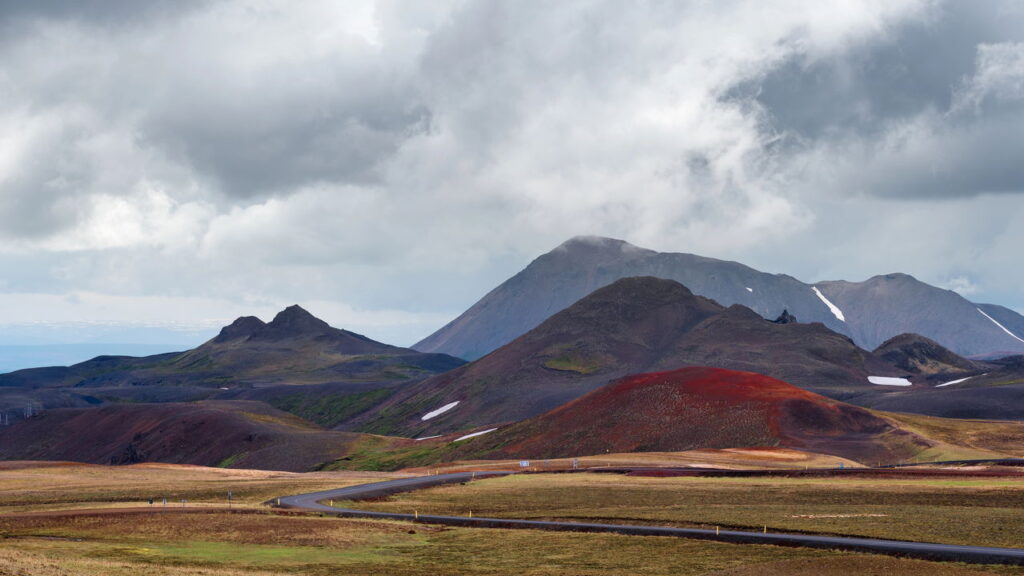Growing scientific interest in volcanoes has led researchers from around the world to turn their attention to Iceland, one of the most volcanically active regions on the planet. It is located in the northeast of the country, an area close to Krafla volcano It became the focal point of an ambitious research project, known as the Krafla Magma Test (KMT).
The initiative, led by an international team, aims to drill into the Krafla magma chamber. The goal is to better understand the behavior of magma underground, which could revolutionize the prediction of eruptions and the development of geothermal energy, using intense heat from deep within the Earth.
Why crater volcanoes?
The KMT project aims to establish an underground magma observatory approximately 2.1 kilometers below the surface. According to Jan Lavelle, professor of volcanology at Ludwig Maximilian University, this endeavor is similar to the Space Race, given its potential to change the understanding of volcanic activity. Drilling will allow temperature and pressure sensors to be installed in the magma, allowing a detailed analysis of its dynamics.
Monitoring subsurface magma activity is crucial, especially considering that about 800 million people live within 100 kilometers of active volcanoes. The data collected can not only save lives, but can also limit economic damage, such as that seen in the eruption of the Eyjafjallajökull volcano in 2010.
Magma and geothermal energy: what is the connection?

Drilling at Krafla also aims to explore new frontiers in geothermal energy generation. The intense heat of the magma provides an almost inexhaustible source of energy, which can be captured to produce electricity. Iceland already uses its geothermal resources extensively, deriving 25% of its electricity needs and 85% of its home heating from geothermal energy.
In 2009, the accidental discovery of shallow magma heightened scientific curiosity about the energy potential of these thermal fields. The superheated steam generated was ten times more efficient than traditional geothermal wells, indicating huge potential to transform the global energy sector.
Challenges and innovations in volcanic drilling
Drilling in a volcanic environment represents a major technical challenge. Materials resistant to high temperatures, extreme pressure and corrosive gases are required. Researchers are developing new alloys of nickel and titanium to cope with these extreme conditions. Experience in industries such as aerospace and nuclear serves as the basis for these technical innovations.
Although drilling near magma may seem risky, the scientists responsible for the KMT project are optimistic about the project’s safety. Geological analyzes indicate that the possibility of risks such as explosions or earthquakes is small in the area.
The future of volcanic research
The KMT project is receiving great attention from the global scientific community. The success of this initiative could herald a new era in volcano prediction and energy efficiency. As the world seeks cleaner, more sustainable energy solutions, exploring the hidden power of volcanoes represents a promising and unexplored frontier.
While the technological challenges are significant and the initial cost is high, the potential benefits of the project provide strong reasons to continue this research. The KMT can not only break new ground in volcanology, but also enable a transition to low-carbon energy sources in harmony with global environmental sustainability goals.

“Hardcore beer fanatic. Falls down a lot. Professional coffee fan. Music ninja.”


![[VÍDEO] Elton John’s final show in the UK has the crowd moving](https://www.tupi.fm/wp-content/uploads/2023/06/Elton-John-1-690x600.jpg)



More Stories
The Director of Ibict receives the Coordinator of CESU-PI – Brazilian Institute for Information in Science and Technology
A doctor who spreads fake news about breast cancer is registered with the CRM of Minas
The program offers scholarships to women in the field of science and technology